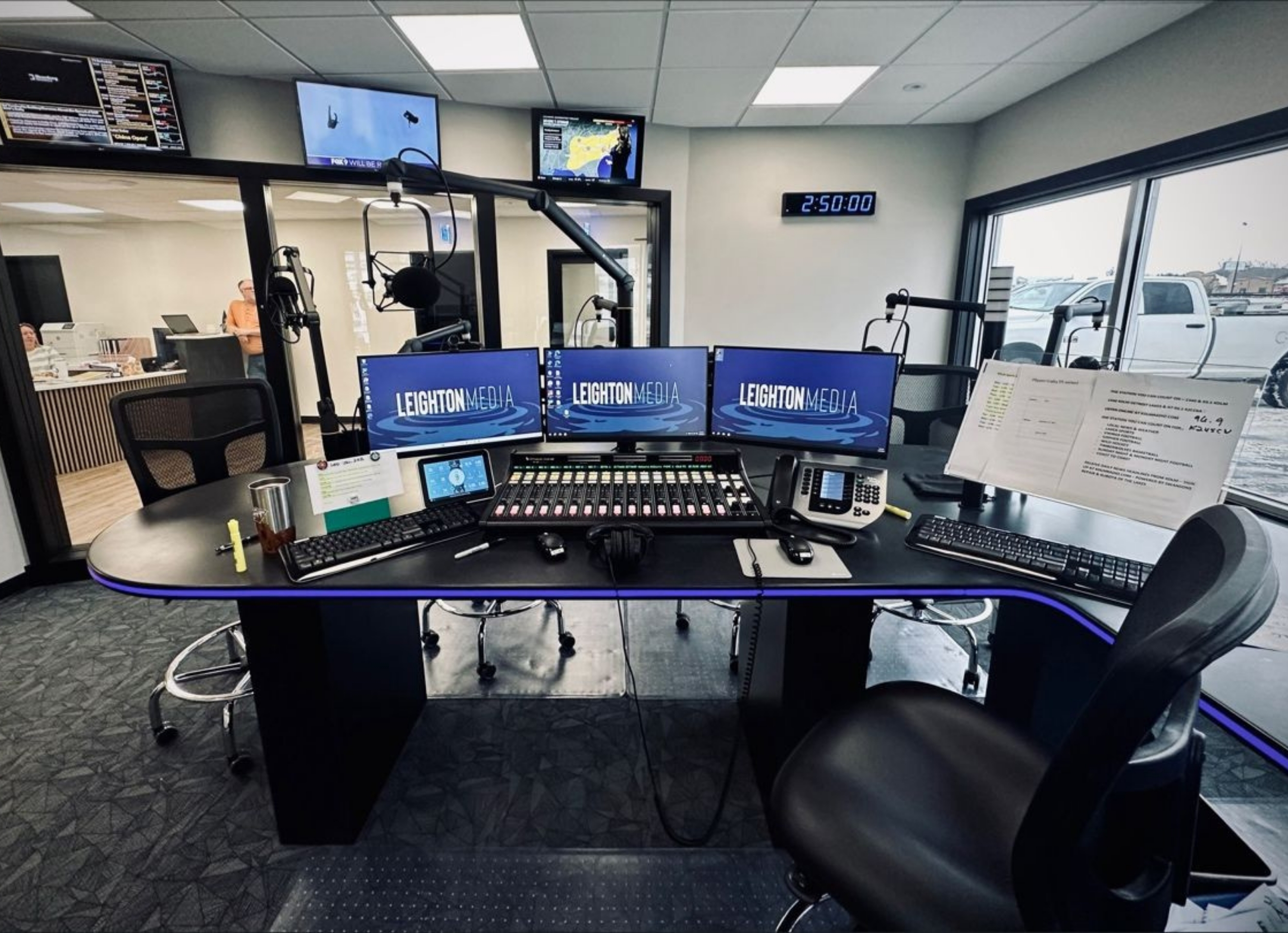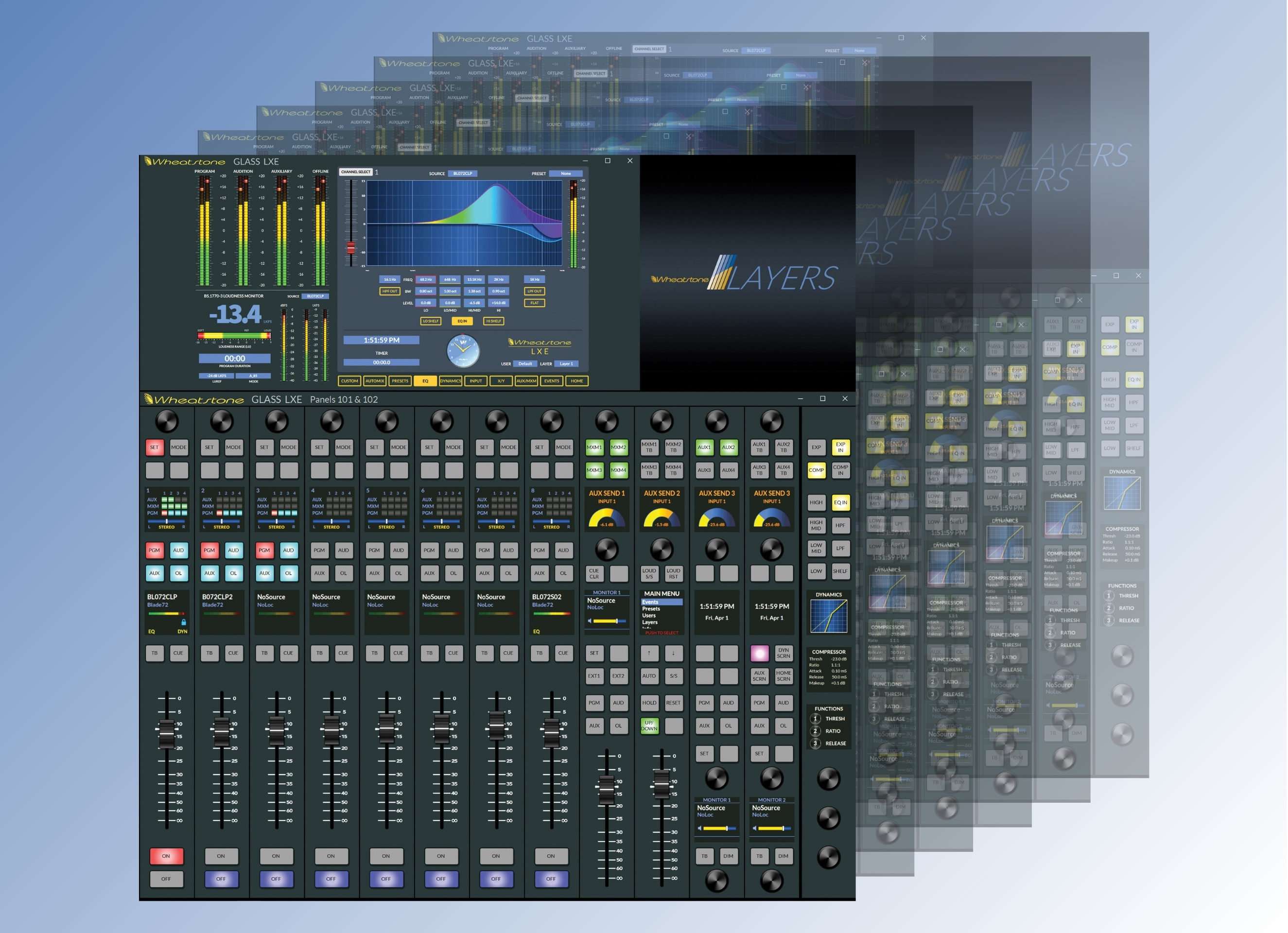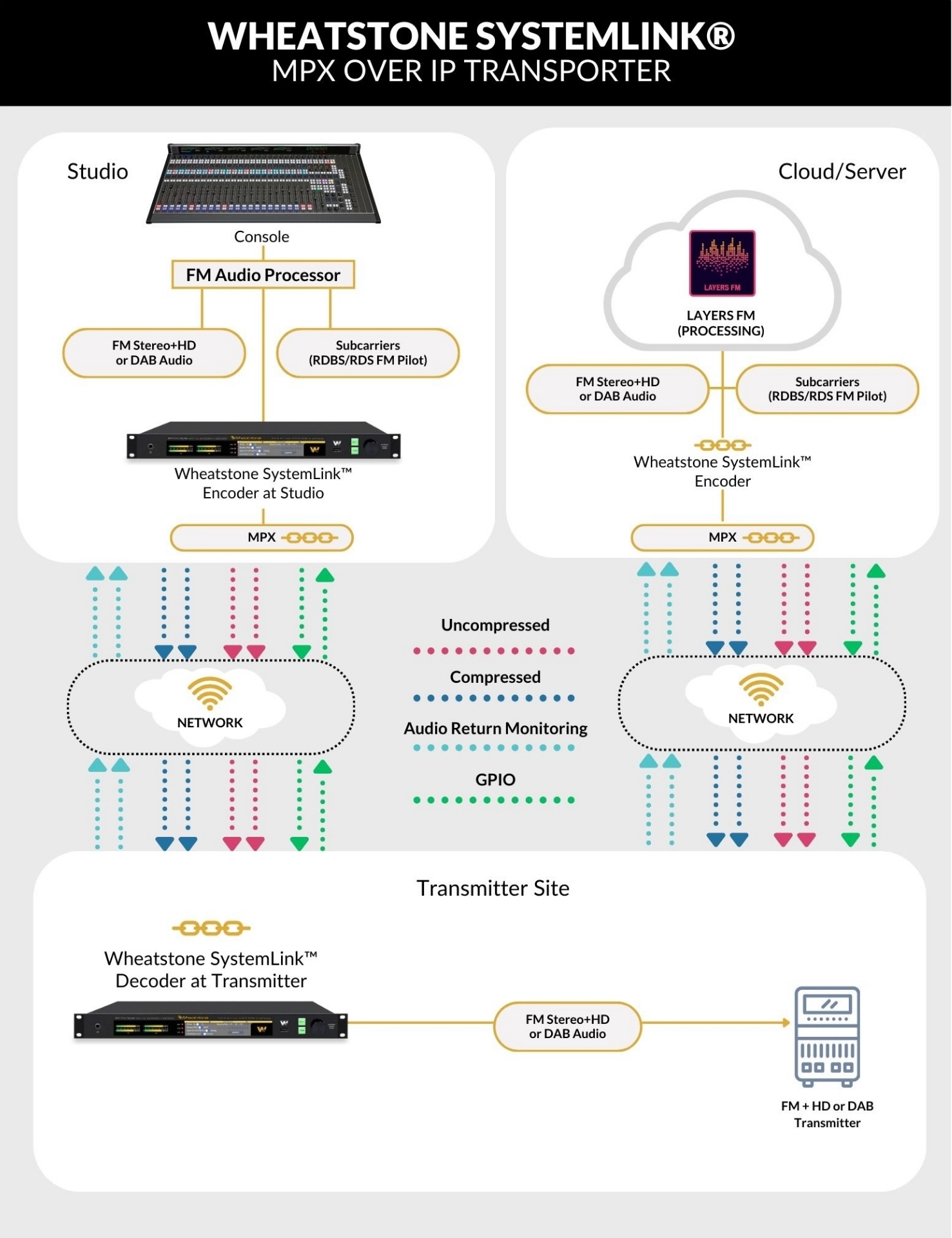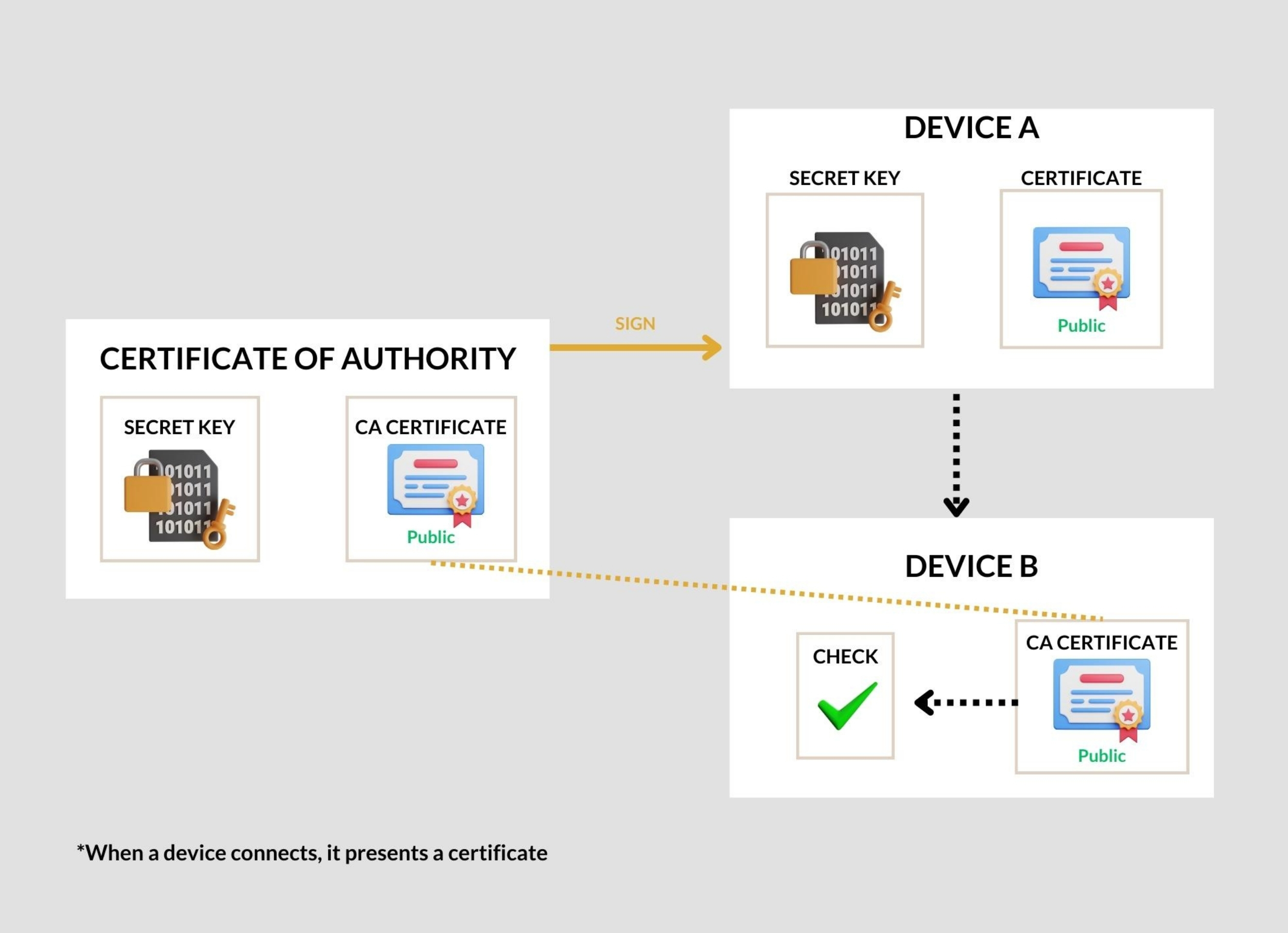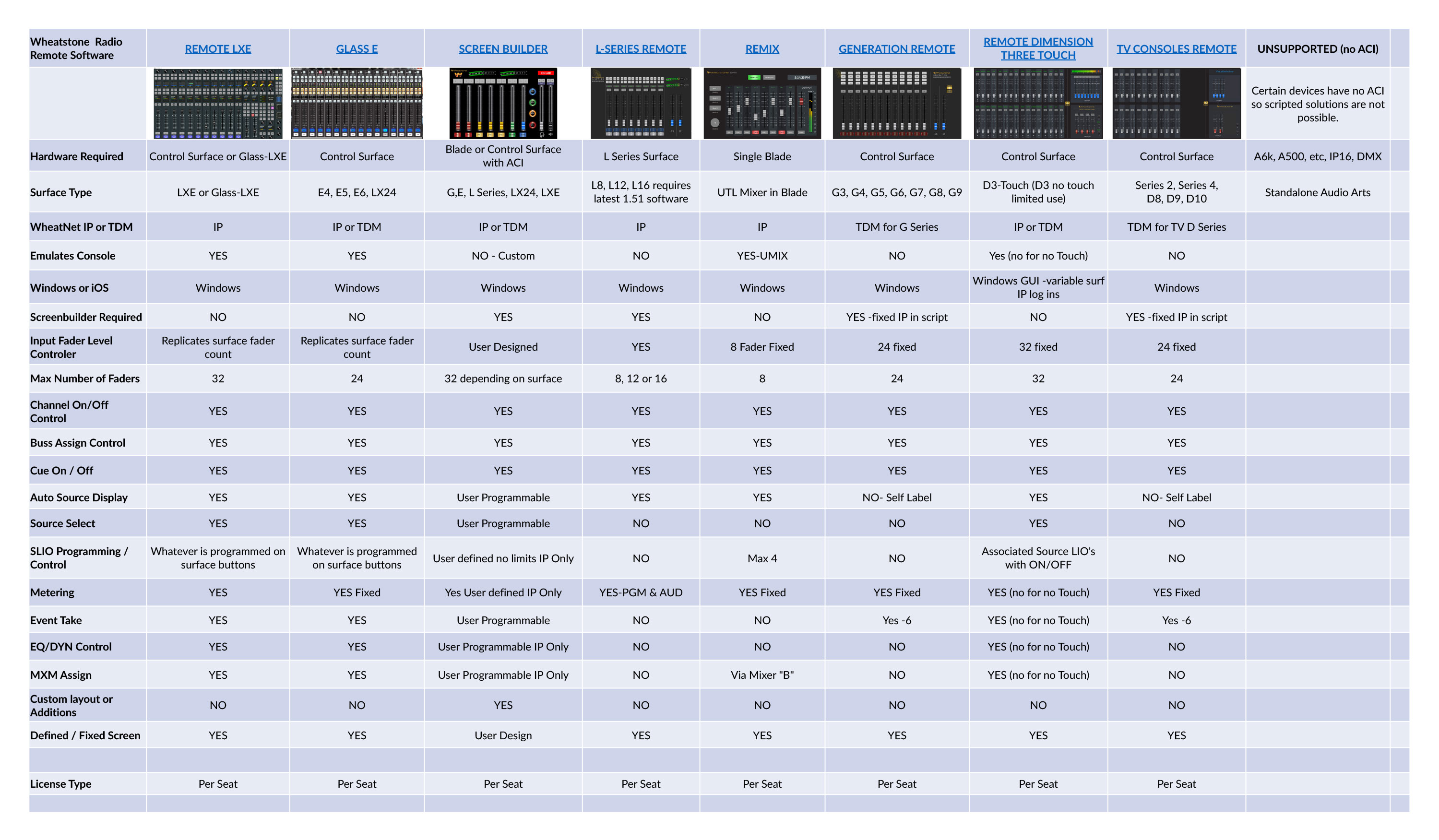
WHEAT:NEWS April 2024 Volume 15, Number 4
80s Called and Want Their POTS bacK
By Dan McQuillin, Broadcast Bionics
If you’ve been holding off moving to a SIP phone system because of the complexity, here’s one simple solution that fits easily into your WheatNet IP facility. Broadcast Bionics’ Dan McQuillin explains. (You can check out Caller One with our LXE console surface at BGS booth C2808 during the NAB show).
In August 2022, the FCC removed requirements for ILECs to offer analog POTS lines at competitive rates. By October 2023, all remaining cost obligations were lifted. This spurred carriers to plan the decommissioning of outdated lines, aiming to end all PSTN lines by 2030.
If you have been holding off upgrading to a SIP/VoIP phone system, you’ll be glad to know that Broadcast Bionics has a software solution for WheatNet IP facilities. Caller One uses the standard SIP protocol to communicate with carriers on one end and another standard protocol on the studio end to integrate easily with Wheatstone console surfaces.
All caller information shows up on a telephone control panel set into, say, a Wheatstone LXE console for quick monitoring, routing to air or even recording to VoxPro for further editing. You can answer, screen and control calls right from the console surface or a browser interface.
Caller One uses WheatNet IP audio drivers for routing caller audio and natively supports WheatNet IP GPIO for logic controls like any other element in the WheatNet IP audio networked studio. It handles multiple SIP lines; mix-minus and call conferencing are standard. Additionally, there is an option to subscribe to Broadcast Bionics’ webRTC client Anywhere to add HD remote contributor feeds directly into the system right alongside standard calls - perfect for reporting from OBs and sports events.
Caller One is here to make the transition to SIP painless, all while saving line costs, improving call quality, and opening the door to all that digital has to offer.
See and hear the Wheatstone LXE console with Broadcast Bionics Caller One in action during NAB 2024 at the Broadcasters General Store booth, Central Hall, C2808. While you’re there, be sure to ask about WheatNet IP audio networking and Camera One for adding visual radio to the studio.
HOW TO WHEATNET THE COFFEE POT
You might have already seen this photo of Leighton’s studio with the spectacular strip of blue lighting along the edge of the furniture. What you can’t see here is the coffee pot that DOE Tony Abfalter “WheatNet-IP’d” to a studio console. He’s done the same with door locks and security systems and, yes, this string of LED lighting, which changes from blue to red to bright orange depending on studio status. After all, this is the DOE who WheatNet IP’d everything and anything possible in all seven Leighton markets before heading to Antarctica for the National Science Foundation on temporary hiatus.
“I went out to the ice fields of Antarctica knowing that everything was in good hands. We prevented so many problems by having the right system in place,” said Abfalter, referring to his hiatus from Leighton in 2022 to join researchers and climatologists at McMurdo Station on Ross Island, Antarctica. He was the Senior Communications Technician in charge of RF there for eight months before returning to his duties as DOE/IT for Leighton Broadcasting, headquartered in St Cloud, Minn.
Now, almost two years later, it’s WheatNet IP as usual for Leighton Broadcasting’s staff and 32 AM and FM stations throughout most of Minnesota and Eastern North Dakota.
Need to unlock the entrance door while in the studio? No problem. Abfalter programed soft keys on the LXE consoles to unlock doors through the I/Os on the WheatNet IP Blades. Need to get the coffee going in the morning? Again, no problem. There’s a button on the LXE for that, too. “Our morning guy likes to get the coffee started when he gets there so I assigned a softkey on the console that triggers a relay to turn on the coffee pot. Now, the first thing in the morning, he hits that and does his show prep, and then walks down the hall to grab a hot cup of fresh brew,” he said.
Need to play a joke on the talent? Abfalter has a special switch for that, too. One day he hooked up an inconsequential switch no longer in use on the KCLD-FM main console so that when a certain jock came in the next morning and flipped the switch, it flooded the overhead monitor with bass. “She came in and flipped that switch and just… turned white,” he said. Of course, meanwhile on-air, things were broadcasting along as usual. She didn’t know that Abfalter had “WheatNet IP’d” the switch to a crosspoint feeding an old audio processor that was hooked up to the overhead monitor only.
“I even put tape over the switch that said ‘Do not touch,’” he added.
Pranks aside, there are plenty of ways WheatNet IP makes life easier for Leighton talent. Just one example: smart associated connections so that when the main mic moves to a new venue, the other associated mics for a show follow, complete with their unique settings.
All Leighton studios in seven markets are standardized on WheatNet IP audio networking, the most recent shown above in Detroit Lakes, Minn. The coffee is always on and the talent is always on their toes as the WheatNet IP shortcuts and conveniences continue.
INTRODUCING THE INFINITE STUDIO THIS NAB
Yes, we’re going there.
We’re combining our intelligent AoIP with the latest in cloud and connectivity to create the infinite studio capable of sharing media, workflows and resources across distances.
Previously, we extended into the cloud and server realm with our Layers Software Suite, which includes mixing, streaming and FM software hosted on a local server or running on cloud data centers. Long before that, we introduced the WheatNet IP intelligent audio network of 200+ interconnected AoIP elements.
Now, this NAB show, we’re adding RIST connectivity to our AoIP technology and running our Layers software on Amazon Web Services (AWS) Global Accelerator. AWS Global Accelerator is Amazon’s private network made for media with high availability and security features critical to 24/7 broadcasting. RIST connectivity provides the error correction necessary for real-time media delivery across any IP link.
Completing the cloud FM air chain is our Wheatstone SystemLink® for transporting FM MPX + HD/DAB over IP links of any capacity, whether as uncompressed or via optional μMPX. SystemLink is compatible with existing STLs and audio processors and will be at NAB booth W1731 along with our infinite studio comprising WheatNet IP intelligent network and Layers cloud and server software running on AWS Global Accelerator.
WHITE PAPER: RIST EXPLAINED
By Dominic Giambo, Manager of Technology
This upcoming NAB show, you’ll hear us talk about Reliable Internet Stream Transport (RIST) as it relates to cloud and moving media across the public internet. Here, Dominic Giambo, Wheatstone’s Manager of Technology, explains what RIST is and why it’s important in his technical paper published in the December 2023 issue of Radio World Engineering Extra.
If you’ve been working with networks for a while, you’re familiar with Transmission Control Protocol and its fast-talking cousin User Datagram Protocol. You might even have wondered, as we have, if it’s possible to combine TCP and UDP into one?
One is more reliable and the other is faster, which is why we use TCP as the IP transport layer for web browsing, email and other enterprise applications and we use UDP as the IP transport layer for AoIP, streaming and other real-time media applications.
Their main difference is that TCP uses a bigger buffer (read: more delay) to guarantee that data packets are accounted for and delivered reliably, whereas UDP is a simple message-oriented protocol that can transport audio and control data at very low latency.
We can reduce WheatNet IP audio network packet timing to 1/4 msec for minimum latency in part because of UDP multicasting, which means that local audio transport and studio controls are almost instantaneous.
But what if we go beyond the studio network and want to live-stream audio and control data in real time across the public network, where links are less reliable, and distance adds more delay? Is it possible to have both the reliability of TCP and the speed of UDP?
Enter Reliable Internet Stream Transport, or RIST, an open-source transport protocol developed for reliable transmission of video and audio in real time.
RIST adds error correction and packet recovery to UDP multicasting similar to that of TCP, but without the huge buffering time. It uses things like RTP sequencing to identify potential packet losses and multi-link bonding to guarantee media delivery over these public links with very little delay and without having to compress or reduce the bits, and hence the quality, of audio being transported.
Established by our industry
RIST is based on established protocols widely adopted by the broadcast industry. It uses the interoperability profiles found in VSF TR-06-1 and VSF TR-06-2, the technical recommendations of the Video Services Forum (VSF), which gives us important features like link bonding, forward error correction, seamless switching and many of the specifications found in SMPTE 2022-1.
All of this makes it highly interoperable with broadcast-grade equipment, yet gives manufacturers the freedom to innovate within our own product implementations.
Fig. 1, above, shows RIST use for transporting real-time audio between two broadcast facilities across the public internet.
We added it to our protocol list for Wheatstone AoIP and streaming products for these and other reasons. RIST is a relatively new arrival in the media transport world, and it’s especially timely given the growing number of high-speed links now making it possible to stream at full audio bandwidth as part of a low-cost contribution network or transport between regional centers.
More and more high-speed links are popping up on the public network, and RIST now gives us a way to get it there. We are using RIST, for example, to get streams back and forth between studios and AWS data centers.
How it works
RIST adjusts in real time to achieve the lowest latency and fastest performance for a given link, whether the link is closer to an AWS data center or several hops away. In our test runs, RIST doesn’t seem to degrade performance like TCP does.
TCP is designed to be error correcting; it waits to see that packets are received correctly and if not, it will issue a retry to the sender. If too many retries are issued, TCP will throttle down its transmission speed. It doesn’t help that TCP uses large data packets, so by the time it figures out that the packet needs to be resent, it’s already been a half-second.
All of this makes TCP packet timing unpredictable and requires deeper buffering, making it unsuitable for real-time transport. When you click a page on your web browser, it can take a second or two for the web page to appear. That works for most applications, but when you’re mixing or streaming live, even 100 milliseconds is too much delay.
Fig. 2, above, shows the impact of packet loss on decoded audio.
Comparatively, RIST uses smaller packet sizes and therefore can hold to a much better tradeoff threshold between latency and speed.
RIST also uses RTP under the hood, which means it gives us RTP time stamps critical to real-time audio or video transport. We’ve been able to add RTP to UDP streams, but sequencing of the RTP time stamps using UDP is not reliable over long distances. Depending on distance and the quality of the link, there’s no guarantee that packets will arrive in the proper order; with RIST, RTP time stamps get sequenced by the protocol in the correct order, making it ideal for real-time transport of audio and video.
RIST supports IP multicast natively, which means it combines the ability to provide one-to-many transmission with very low latency and lower network overhead. RIST also supports load sharing and seamless switching so that should a link go down, it can route around that link and use the alternate link without interruption.
With RIST, you can dial up a 100-millisecond delay for a live event like a concert and know that you have about 100 milliseconds of delay and you’re not going to have a problem getting it delivered. It’s as easy as opening up a RIST stream session between two points — in our case from a WheatNet streaming appliance or software — and establishing a dedicated communication between the local IP address and an IP address on the far end.
Bank-level security
One little-known, but increasingly, important benefit of RIST is its encryption and validation technology.
Going from a closed AoIP network in your building to a third-party cloud provider like AWS changes everything about security measures. Your media becomes a much more likely target sitting on a public server in the open Internet.
Similar to Secure Reliable Transport or SRT, another protocol you might have heard about, RIST uses a pre-shared key (PSK) method provided in the VSF TR-06-2 specification for access control, which has long been a problem for standard IP multicast delivery. This specifies that all receivers be configured with a secret passphrase, which can change on the fly as necessary. But unlike SRT, RIST augments PSK with a secure remote password protocol and also offers a DTLS (Data Transport Layer Security) mode with certificate-based authentication. This is fundamentally the same security technology used by banks; it’s almost impossible for a third party to listen in or pirate your broadcast streams.
Fig. 3, above, shows the RIST certificate authentication process using DTLS specifications. When a device connects, it presents a certification that, unless trusted, will be rejected.
For these and other reasons, RIST is being adopted by a variety of media companies, including Wheatstone. RIST is now included in our streaming appliances and software as well as our WheatNet IP Blade 4s.
The Wheatstone online store is now open! You can purchase demo units, spare cards, subassemblies, modules and other discontinued or out-of-production components for Wheatstone, Audioarts, and VoxPro products online, or call Wheatstone customer support at 252-638-7000 or contact the Wheatstone technical support team online as usual.
The store is another convenience at wheatstone.com, where you can access product manuals, white papers and tutorials as well as technical and discussion forums such as our AoIP Scripters Forum.
Compare All of Wheatstone's Remote Solutions
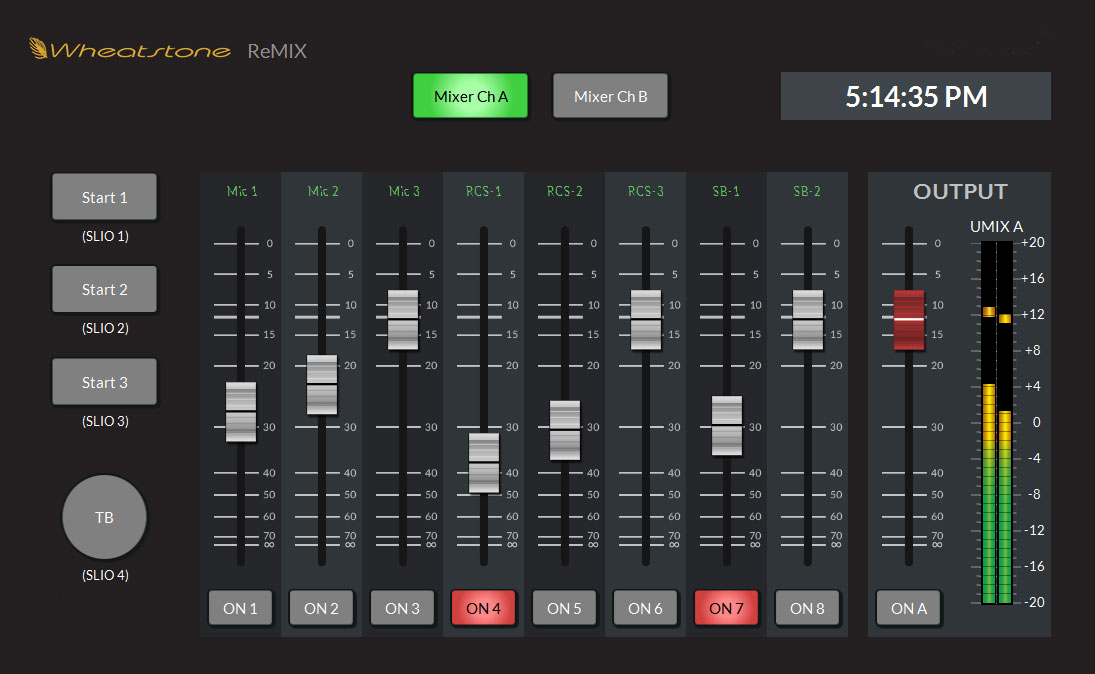 We've got remote solutions for virtually every networkable console we've built in the last 20 years or so. For basic volume, on/off, bus assign, logic, it's as easy as running an app either locally with a good VPN, or back at the studio, using a remote-access app such as Teambuilder to run.
We've got remote solutions for virtually every networkable console we've built in the last 20 years or so. For basic volume, on/off, bus assign, logic, it's as easy as running an app either locally with a good VPN, or back at the studio, using a remote-access app such as Teambuilder to run.
Remote Solutions Video Demonstrations
Jay Tyler recently completed a series of videos demonstrating the various solutions Wheatstone offers for remote broadcasting.
Check out the chart below, and/or click here to learn more on our Remote Solutions web page.
 Studio Project Planning Guide
Studio Project Planning Guide
EVERYTHING YOU NEED TO KNOW FOR MAKING YOUR STUDIO PROJECT A SUCCESS
Have you seen the latest smart studio trends? Discover expert tips, surprising uses for AoIP Blades, 6 common studio gotchas, and how to be aware of little expenses. A must-read before you begin your studio project.
 Making Sense of the Virtual Studio
Making Sense of the Virtual Studio
SMART STRATEGIES AND VIRTUAL TOOLS FOR ADAPTING TO CHANGE
Curious about how the modern studio has evolved in an IP world? Virtualization of the studio is WAY more than tossing a control surface on a touch screen. With today's tools, you can virtualize control over almost ANYTHING you want to do with your audio network. This free e-book illustrates what real-world engineers and radio studios are doing. Pretty amazing stuff.
 Advancing AOIP for Broadcast
Advancing AOIP for Broadcast
TAKING ADVANTAGE OF EMERGING STANDARDS SUCH AS AES67 VIA AUDIO OVER IP TO GET THE MOST OUT OF YOUR BROADCAST FACILITY
Putting together a new studio? Updating an existing studio? This collection of articles, white papers, and brand new material can help you get the most out of your venture. Best of all, it's FREE to download!
IP Audio for TV Production and Beyond
WHAT YOU NEED TO KNOW ABOUT MANAGING MORE CHANNELS, MORE MIXES, AND MORE REMOTE VENUES
For this FREE e-book download, we've put together this e-book with fresh info and some of the articles that we've authored for our website, white papers, and news that dives into some of the cool stuff you can do with a modern AoIP network like Wheatstone's WheatNet-IP.
Got feedback or questions? Click my name below to send us an e-mail. You can also use the links at the top or bottom of the page to follow us on popular social networking sites and the tabs will take you to our most often visited pages.


